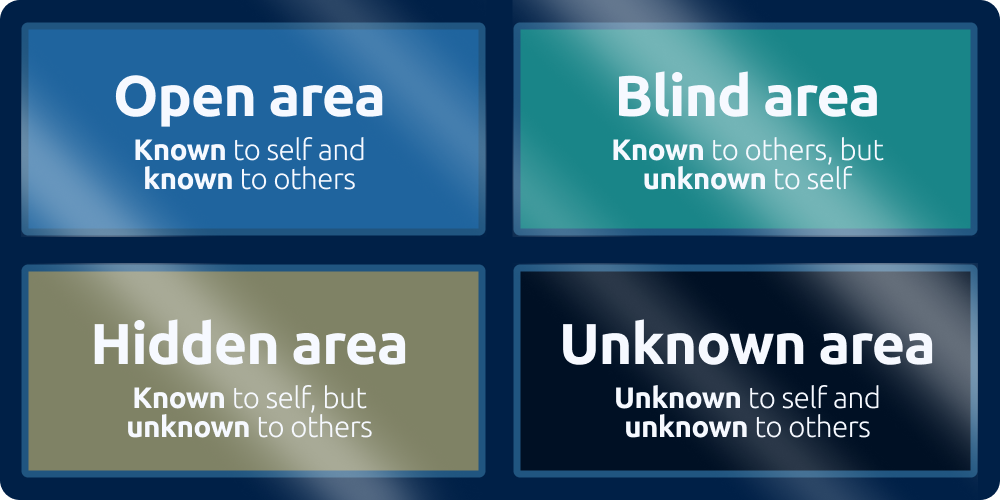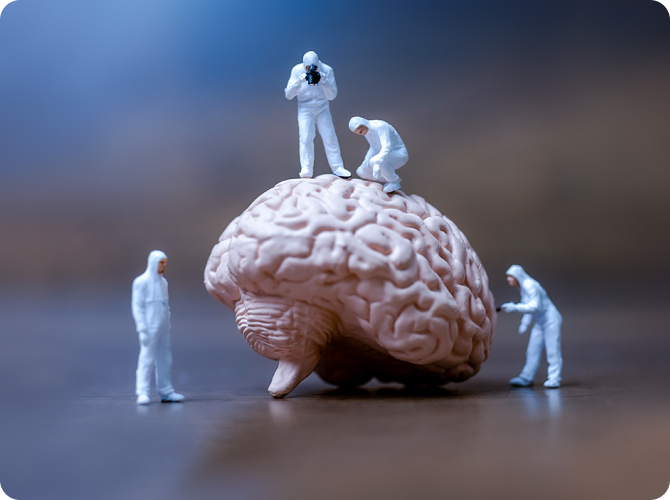Self-awareness is being able to consciously reflect on one’s thoughts, feeling, or emotions (Duwal & Wickland, 1972). Essentially it’s the skill of being able to look at yourself objectively, know what you are feeling and experiencing, and identify why this is happening.
Silvia and O’Brien (2005) show that growing your self-awareness will help you:
- Take the perspectives of others
- Improve your self-control
- Become more innovative
- Increase your confidence
Additionally, self-awareness forms the foundation of developing your Emotional Intelligence (EQ), which means that improving it will also serve to:
- Strengthen your relationships
- Enhance your decision making
- Better your stress management
- Improve your self-perception
- Grow your self-expression
Introduced by Joseph Luft and Harry Ingham (1955), the Johari Window is a self-awareness model that represents information about you – your strengths and vulnerabilities, or your thoughts and feelings – in relation to yourself and others, from four perspectives:
- Open area: known to self and others
- Blind area: known to others but unknown to self
- Hidden area: known to self but unknown to others
- Unknown area: unknown to self and others

Grow your self-awareness
The aim of the Johari Window is to help increase your self-awareness. This means growing your open area. It’s a dynamic model and changes as you provide more information to others, and they give you feedback. This can be done in three ways:
- Reduce your blind area
- Share your hidden area
- Explore your unknown area
Reduce your blind area
The blind area is what others know about you but you are unaware of. You can reduce this area and increase what you know about yourself by inviting feedback. Ask the following to some safe people who know you well:
- What is a strength of mine that I might be unaware of?
- What is a weakness of mine that I might not know about?
- What would you say are some blind spots of mine?
Share your hidden area
The hidden area is what you know about yourself but others don’t know. You can increase what others know about you by sharing information about yourself. Reducing the hidden area over time can increase your ability to relate effectively with people around you, and help them to relate appropriately to you. This can be a vulnerable experience and should only be done with those you feel safe with. Try doing the following with someone you trust:
- Share a dream/goal of yours that they don’t know about.
- Share a strength of yours they might be unaware of.
- Share one thing you would change about yourself and why.
Explore your unknown area
The unknown area is information that you can’t access on a conscious level or information that is unknown to both yourself and the others around you. This could include that which is close to the surface, such as feelings and beliefs; or can be deeper like subconscious realities; attitudes from childhood; or undiscovered natural abilities. The unknown becomes smaller depending on what you have discovered about yourself or what others discover about you and share with you. Here are some ideas to help you explore your unknown area:
- Try out a new activity or hobby.
- Get out of your comfort zone.
- Go on a journey of self-discovery with Mygrow.
Just the start
While the Johari Window model is a great starting point, this is just the beginning of developing your self-awareness. At Mygrow we believe self-awareness is a foundational component of Emotional Intelligence (EQ), which we define as a set of emotional skills that makes you great at managing yourself and interacting with others. Basically, it’s the set of skills that make you better at being you.
Reference list
-
Duval, S., & Wicklund, R. A. (1972). A theory of objective self awareness. Academic Press.
Luft, J. and Ingham, H. (1955) ‘The Johari window, a graphic model of interpersonal awareness’, Proceedings of the western training laboratory in group development. UCLA.
Silvia, P. & O’Brien, M. (2005). Self-Awareness and Constructive Functioning: Revisiting “the Human Dilemma”. Journal of Social and Clinical Psychology,


